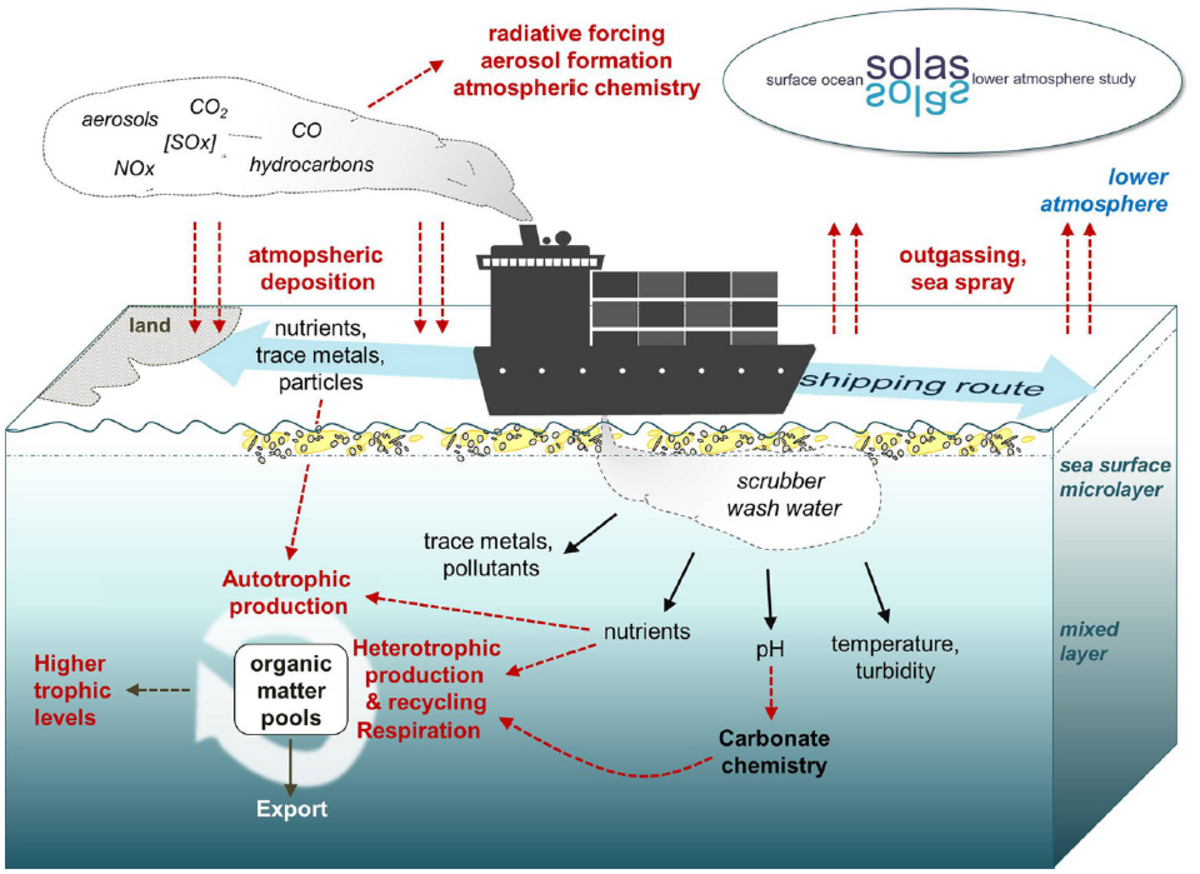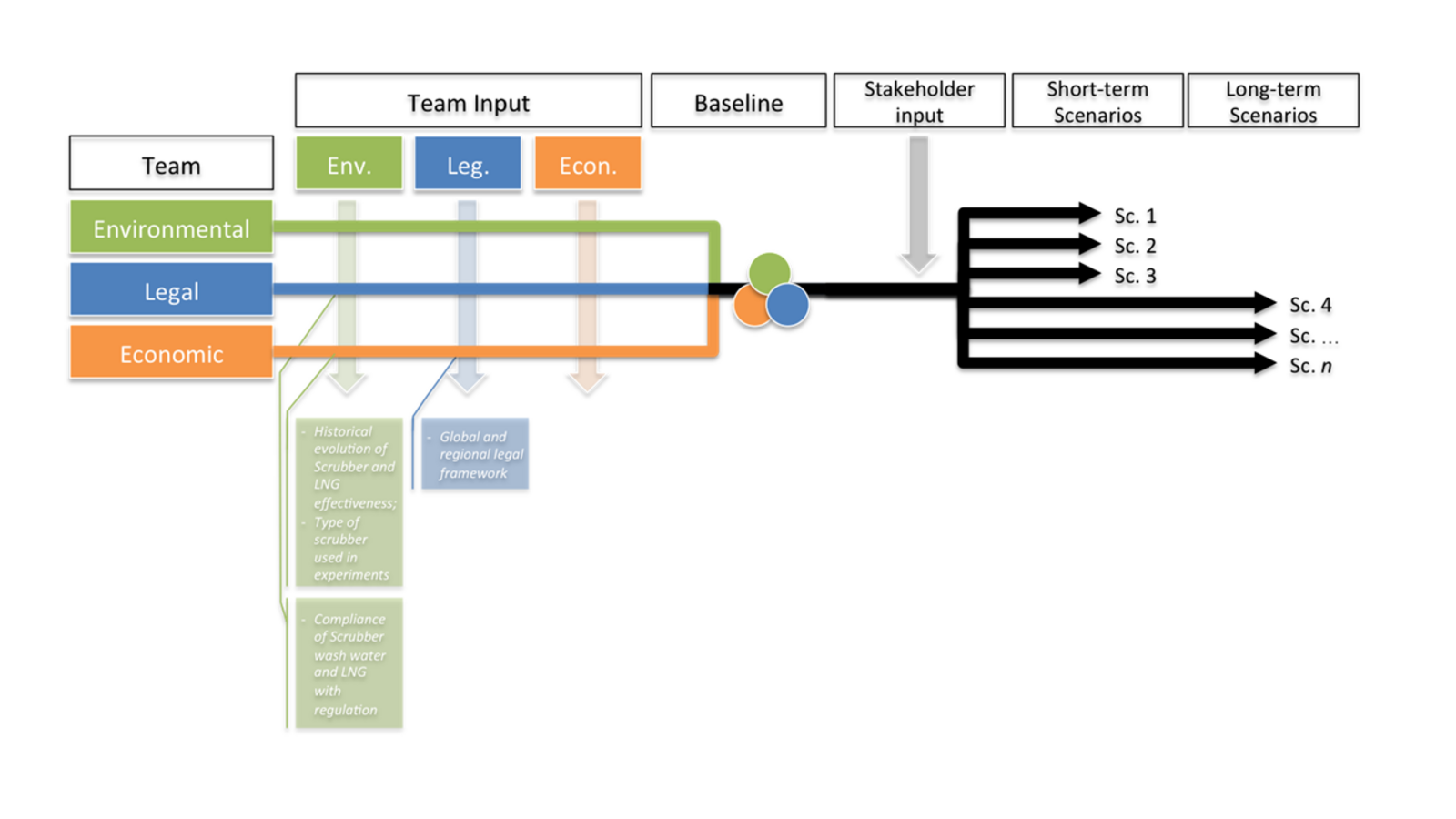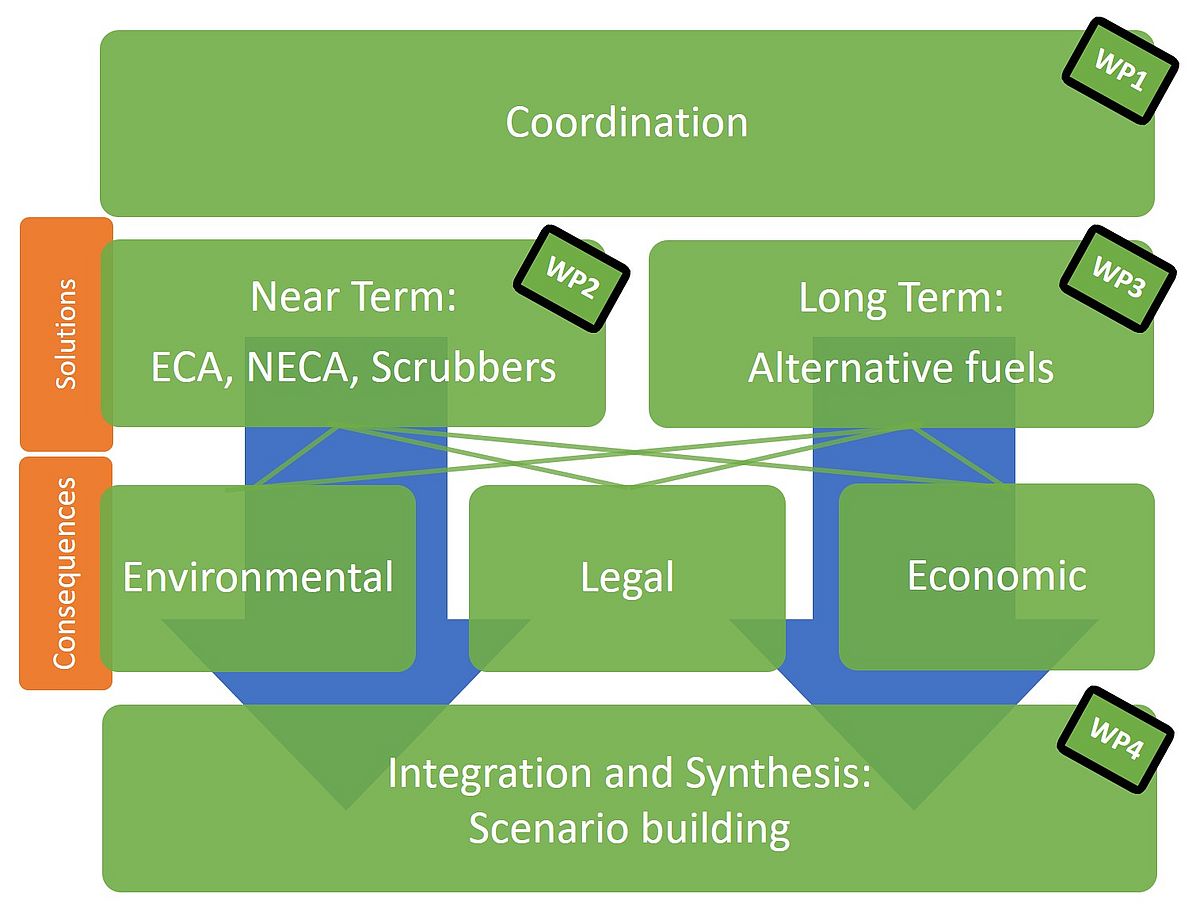Objectives and workplan

Endres et al., 2018
The environmental, economic and legal aspects of ship emission reduction and control mechanisms are analysed. The project is divided into two parts:
1) the near-term perspective will focus on the near-future consequences of the ECAs, where it is likely that the use of scrubbers will increase, and
2) the long-term perspective, in which alternative fuel (e.g. LNG) will be introduced.
Within the near-term perspective, the environmental impacts on the lower atmosphere and upper ocean include pollutant emission from ship smokestacks and liquid discharge. The reduction of sulfur oxide emissions into the atmosphere using scrubber technology results in concentrated discharge to the surface water, potentially including particles and PAH. Legal and economic regulation includes different levels of norm- and mechanism-setting, as well as implementation and monitoring. We explore the impact on biogeochemical cycling and air-sea exchange, examine the influence of mediation techniques on both environmental and economic issues, assess the efficacy of the regulation (or lack thereof) on different levels, and evaluate governance instruments taking into account distributional impacts.
Regarding long-term consequences, we analyze how procedures and institutions should be established to provide for an effective and adaptive legal framework by comparing current international, regional and national practice in the field of environmental protection, as well as the economic mechanisms that are appropriate to encourage the use of alternative fuels. The climate impact of using alternative fuels is assessed, for example as methane is a much stronger greenhouse gas than CO2, using a variety of model scenarios and emission budget calculations from literature review. A second aim is to engage in research co-designed with industry and political partners.
The work from WP2 (near-term) and WP3 (long-term) are integrated by setting up a number of scenarios based on the legal, economic and environmental analyses from the respective WPs. The scenarios are modeled and the results used to suggest a synthesis with a list of potential problems/possibilities for the shipping industry, from the near and long-term perspective (WP4). This is important, because shipping companies' strategies to comply with emission regulations are unclear. In such situations, the detailed assessment and impact of potential solutions on the environment are often compromised. As we are already in the midst of a climate change crisis and struggling to achieve the net zero CO2 emissions goal, any negligence at the planning stage could pose a severe long-term threat to our fragile ecosystem.
Find out more about our outcomes!






